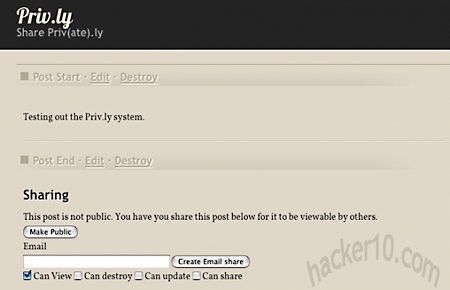Dstrux is an online platform to share notes and files that will self-destruct on the date you specify and tracks when somebody has seen the message you sent to them. The files and notes you share are encrypted in your browser before uploading them to dstrux servers with SSL, the system stops everybody, including dstrux, from seeing what you are sharing.
This service can be used to share messages with other people while not exposing the data to Internet wire-tapping, but the main idea is to be able to exchange personal data in social media like Facebook or by email without having to upload photos and messages to websites that will archive your messages for years and share it with third parties.

Signing up for a dstrux account can be done with your Facebook account or entering an email address and password, linking your Facebook account with this service means revealing your identity so I selected email signup instead.
After login in you will see a simple interface with “Received“, “Shared” and “Forwarded” tabs and a notification alarm bell on top that tells you the date and time a contact has seen a message you sent to them with the date it was destroyed. If you wish to share a file or note with somebody upload it from your computer, set the timer to days,hours or minutes and optionally add blurring to the photo. Blurring stops the receiver from being able to capture a full screenshot of the picture you are sharing, when turned on, the photo will only be visible by sections as you hoover your mouse over it.
The receiver does not need an account with dstrux to be able to read the messages but dstrux encourages them to open one to reply to you in the same fashion. Note that destroyed files will still be available in your “Shared” tab, clicking on them will show metadata about who has seen them, you can delete obsolete files clicking on the trash can.
This is an easy to use service, my only criticism is that sharing integration has been made with Facebook and email, I would have appreciated an open link that I can post in Usenet or an online chatroom to share with a group of people that don’t know me.
Dstrux appears designed for one to one data sharing and privacy in mind, I would not suggest this service for anonymity or sharing files in between groups.





